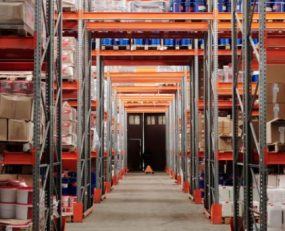
A year on from the first wave of European lockdowns we can look back at a retail sector transformed, with some economies shifting more than half of their retailing spend onto e-retail. Consequently, many retailers have a totally different set of logistics requirements and need more flexibility than ever from their logistics partners.
The marketing posture of retailing is transforming in remarkable ways. It is now possible for both retailers and manufacturers to reach global markets to a higher degree than through conventional retail channels. The possibility exists to redefine what a retailer or a manufacturer is. However, such is the speed of change, it is likely, if not probable, that many manufacturers have not exploited the opportunity. Indeed, Amazon still leads, and in many places dominates, e-retail activity, although it should not be assumed that this will continue. Despite being hard to measure, it would seem likely that e-retail remains highly concentrated, with a handful of very large companies dominating to a degree not seen in conventional retailing for over half a century. Whether or not this state of affairs continues is yet to be seen.
This change has a number of implications for the sector’s logistics industry. The traditional model of ‘trucks & sheds’ looks old fashioned, characteristic of traditional retailing. Rather it is the sort of logistics operations seen at Amazon that are the future. Large, highly capitalised networks of fulfilment hubs and cross-docks with high-levels of automation and even higher levels of focus on data are the key infrastructure that delivers e-retail. Indeed, it is one of the defining characteristics of major e-retail companies that the likes of Amazon have reversed the trend towards outsourcing logistics and have made logistics a core-competency. This is not just restricted to Amazon, although it is the largest and ‘purest’ example. A company such as the UK’s Ocado, for example, is simultaneously a retailer, technology provider and a logistics provider.
Either way, the traditional contract logistics industry looks to have a far more limited future in many parts of the retailing sector. Transport has also changed. The tyranny of the ‘last mile’ is one of the major constraints of e-retailing and is now one of the most important sectors in logistics. So far it has defeated the attempts of even the likes of Amazon to improve its productivity through automation and it remains an area which is still largely – but not wholly – outsourced to LSPs. Many of these LSPs are major providers with strong technology bases, notably the large express carriers, although the traditional mail monopolies are struggling with their position in the limelight. It seems very possible that there will be major restructuring in this sector, including the transformation of the traditional mail monopolies.
Another aspect of this change is the implications for inventory policy. Inventory has been one of the ‘discreet’ defining characteristics of retail logistics and retailing in general. Concepts such as ‘sales’ or the size and locations of shops are in great part determined by retail policy. This in turn has an enormous impact on logistics with, for example, the container shipping sector seasonality driven by it. However, although consumer demand is unlikely to change its patterns, the ability of e-retailers to respond to demand as a result of their superior information management at the tactical level will be key to their success. This will require more precise inventory management, order-to-delivery cycles to be compressed and inventory to be positioned and priced more effectively. In order to remain competitive retailers without strong logistics and technology functions of their own will need their logistics partners to provide these capabilities for them.
Source: Transport Intelligence, March 9, 2021
Author: Transport Intelligence
If you would like to compare potential logistics partners based on their capabilities then please take a look at Ti’s Supply Chain Leaders tool: https://www.ti-insight.com/supply-chain-leaders/
Or, if you would like to learn more about logistics trends and developments across different markets and sectors then please take a look at the Global Supply Chain intelligence (GSCi) platform: https://www.ti-insight.com/product/gsci/